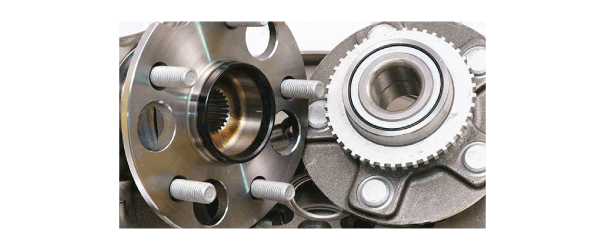ASE A3 Manual Drive Train and Axles

1. The reading on the outside micrometer above indicates:
- A. .203 inch.
- B. .253 inch.
- C. .253 mm.
- D. .228 inch.
2. After removing a rear brake drum from a light truck with a solid rear axle, the technician notices the backing plate and brake shoes are wet with fluid. Technician A says a leaking wheel cylinder could be causing this contamination. Technician B says a leaking axle seal could be the cause. Who is correct?
- A. Technician A
- B. Technician B
- C. Both A and B
- D. Neither A or B
3. Technician A says to use a dial indicator to check for flywheel runout. Technician B says to use a dial indicator to check for crankshaft endplay. Who is correct?
- A. Technician A
- B. Technician B
- C. Both A and B
- D. Neither A or B

4. The part illustrated above contains:
- A. A sealed wheel bearing.
- B. A hub.
- C. An ABS tone ring.
- D. All of the above.
5. A vehicle with a vacuum brake booster and a five-speed manual transmission has a small drip of tan-colored fluid on the driver's side floorboard. Which of the following is MOST likely causing this leak?
- A. Leaking brake master cylinder cup seals.
- B. A leaking clutch master cylinder secondary seal.
- C. A leaking brake vacuum booster check valve.
- D. A leaking clutch master cylinder primary seal.